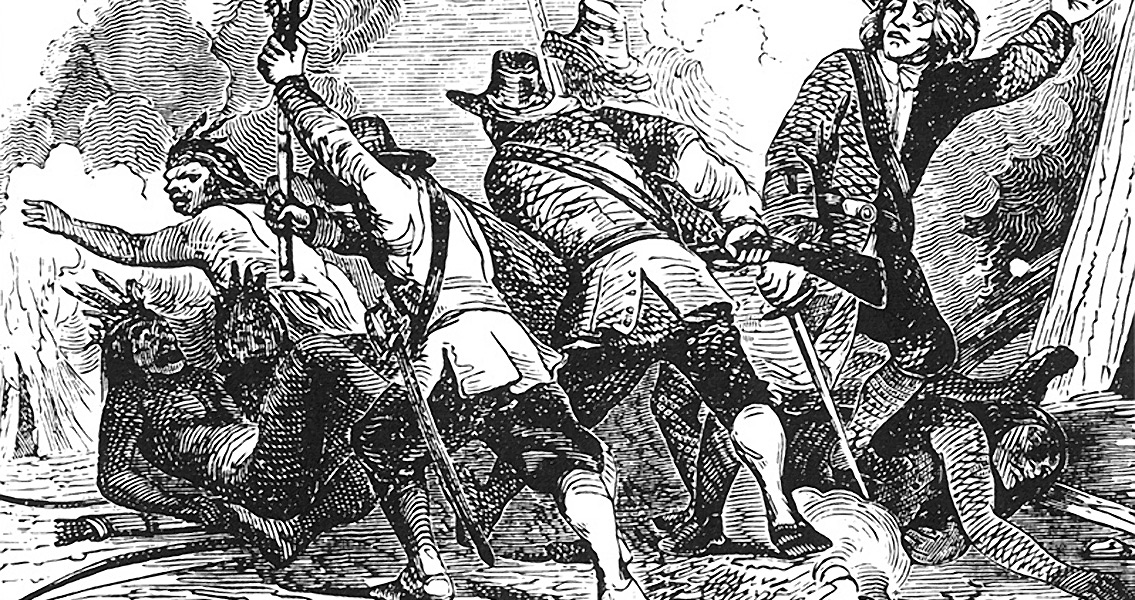<![CDATA[On 26th May, 1637, English Colonists in North America massacred the inhabitants of a Pequot village in Connecticut. The Puritan soldiers, allied with troops from the Mohegan tribe, burnt the village and killed 500 Native American men, women and children. The assault on the village was in response to an attack by Pequot warriors on an English settlement in April, which had killed six men and three women. On the morning of the 26th May the Puritan colonists and their Native American allies launched their revenge attack on the Pequot village, close to the Mystic River. On 5th June Captain Mason, the leader of the Puritan forces, led an attack on another Pequot village, again massacring the inhabitants. On 28th July a third and final attack and massacre took place on a Pequot village, this time close to modern day Fairfield. The Pequot had been decimated and any survivors sold into slavery, although a few managed to escape and join southern tribes in New England. Sometimes referred to as the Pequot War, this devastating clash between Puritan English colonists and the Pequot tribe had been brewing for sometime. The settlers who first arrived in the Connecticut River Valley in the early seventeenth century initially had reasonably peaceful relations with the tribe. As was often the case in this early period of North America's colonisation, the colonists realised that trade and peaceful coexistence with the indigenous population was vital to ensure their own survival in the harsh and unfamiliar territories. As for the Pequot, following the arrival of Dutch colonists to the area in 1611 they amassed a confederacy of dozens of tribes to control the fur trade in the region and secure their economic and political position. The arrival of English colonists had upset this balance and made the Pequot seem a powerful rival. For a number of reasons the relationship between the Pequot and the Puritan settlers began to deteriorate. Fundamental differences existed in the two groups' views on property, the division of labour, the natural environment and warfare, which made further integration between them impossible. What's more, as the colonies expanded, competition for land and resources increased, while the colonist's need for the Native American's expertise and trade had declined. Conflict finally broke out when a number of the Native American tribes that had been subjugated to the Pequot in their confederacy opted to ally themselves with the English. What's more, by the Spring of 1637 Pequot tribesmen had killed thirteen English colonists, with the tribe refusing to hand over the murderers. All of these factors culminated in the attacks on Pequot villages that started on 26th May 1637. The forces led by Captain Mason carried out 'total warfare' on the Pequot tribe, killing women and children and annihilating people's homes. The Pequot had never been defeated in combat before 1637, but the consequences of the massacre were near total annihilation of the tribe. The Pequot War was the first major conflict between English colonists and Native American Indians. The pattern established: initial collaboration between colonists and native peoples deteriorating into brutal conflict, was one which would be repeated throughout the history of the European colonisation of North America. ]]>
English Colonists Massacre a Pequot Village
